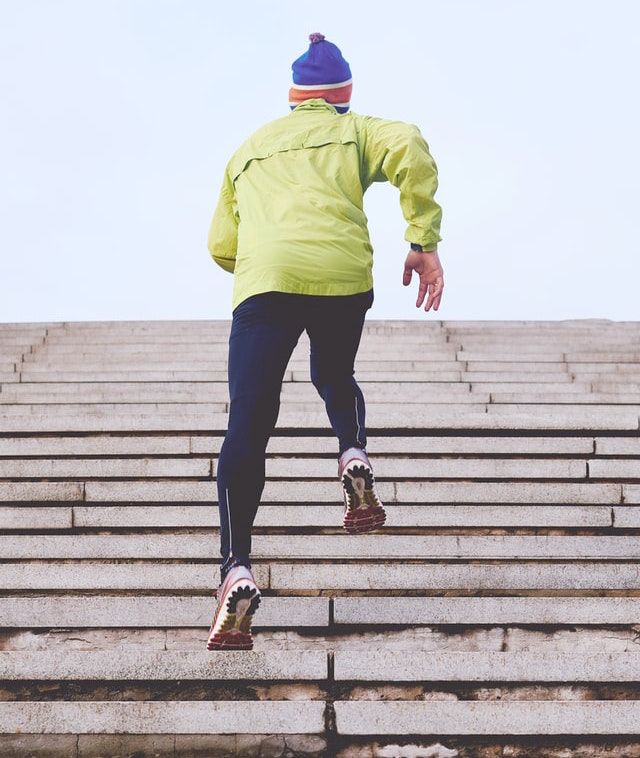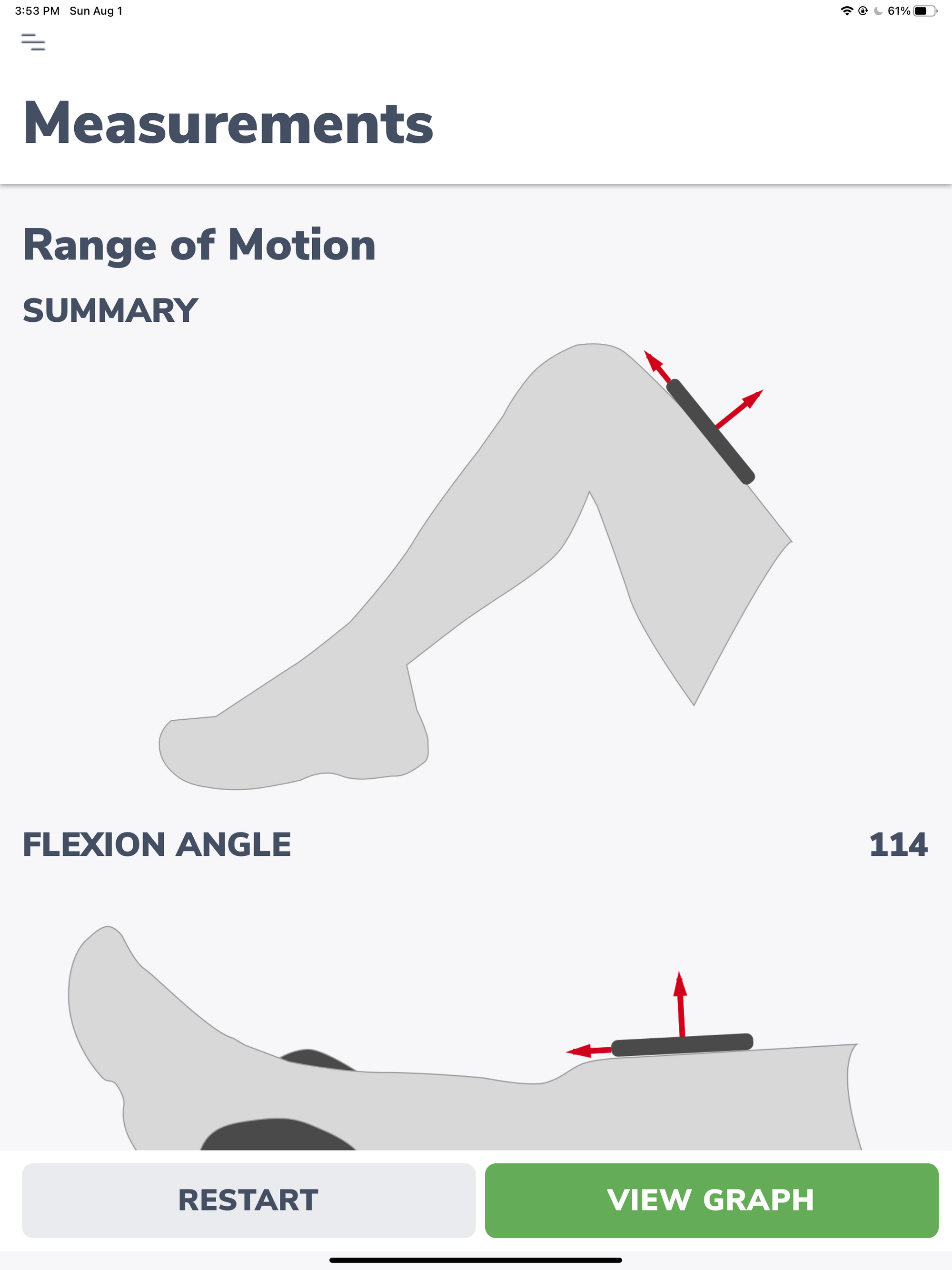The Curovate app's range of motion measurement feature is easy to use and helps to optimize your knee replacement, hip replacement, or ACL rehab journey!
Picture this - you just had knee or hip surgery, you’re in pain, and exhausted from the anaesthetic used for the surgery. Next thing you know, a physical therapist is in your room to help you start your rehab journey! During your session, the physical therapist keeps talking about how important it is that you start moving right away to help maintain your range of motion after surgery. So, what is range of motion and why is it so important?
What is Range of Motion?
Range of motion (ROM) describes the amount of movement possible at a joint that allows a bone to move through space.[1] Physical therapists often take a range of motion measurement to assess how mobile your joint is in comparison to their baseline or to an average person’s joint movement. Through ROM assessments, as well as other questions and physical assessments, physical therapists can determine what treatments may benefit you, such as stretching, strengthening, manual therapy, or splinting.
How can I find out my Range of Motion?
Typically, range of motion is assessed using a tool called a goniometer, which works almost like a large protractor and can be placed beside a joint to measure the angle of the joint. More recently, digital technology has allowed us to measure range of motion using electronic devices, such as digital inclinometers and apps, such as Curovate. Research has shown these digital inclinometers to be more accurate than goniometers and clinician estimation at measuring joint angles of knees.[2] Benefits of digital range of motion assessments include fast measurement and the ability for people to measure joint angle independently to monitor for progress and notice any significant increases in stiffness.
Why is Range of Motion so important?
So you may wonder: “why do these numbers matter to me if I don’t know what they mean?” First of all, the ROM values are an easy way to keep track of your progress following injury or surgery - the higher the ROM number, the more mobile your joint is! The ROM values also allow physical therapists to determine whether your joints are mobile enough to complete many activities that are important to your daily life. For instance, your knee needs roughly 90 to 120 degrees of flexion or bending to use the stairs, whereas 135 degrees of knee flexion or bending is required to step into a bathtub.[4]
The Curovate app features accurate digital inclinometer technology, which allows people to keep track of the hip replacement, knee replacement, or ACL surgery recovery through monitoring their joint movement. The app also provides you with many other important tips and recommendations to help you heal as well as possible!

Image by Clique Images on Unsplash
As I described above, recovering your previous joint movement is important after hip or knee surgery in order to get back to all your favourite activities! There are many different types of exercises that can be used to improve range of motion:
- Passive Range of Motion[3] - a partner or therapist moves your leg through its range with no effort from you.
- Active Range of Motion[3] - you move your leg through its range of movement using the muscles at that joint.
- Active-Assisted Range of Motion[3] - you move your leg through its ROM using the muscles at that joint, with some assistance, either from your other body parts, a towel, or another person.
- Static Stretching[3] - you move into a position that causes a stretch in a specific muscle, often holding that position for 10 or more seconds (e.g. touching your toes with your knees straight and holding for 30 seconds).[5]
- Dynamic Stretching[3] - you move in and out of a position of stretch, repetitively stretching the targeted muscle; these are often used for warm-up activities before athletics (e.g. high knee kicks).[5]
- Proprioceptive Neuromuscular Facilitation (PNF) Stretching - a method of stretching whereby you contract a muscle and follow that up by stretching the muscle.[3] There are many different types of PNF stretches!
Conclusion
Making sure you do a variety of range of motion (ROM) exercises after injury ir surgery is critical to your recovery. This hard work will allow you to optimize your recovery and healing. Curovate’s many features, including an in-app knee and hip range of motion measurement, guided exercises, and more all from the convenience of your phone, makes it an essential tool for recovery. The app will allow you to keep track of your ROM progress as well as offering exercises and virtual physical therapy appointments, which may be the keys to your rehabilitation success following hip or knee surgery! Click on the links below to download the Curovate app!
 |
 |
|---|







